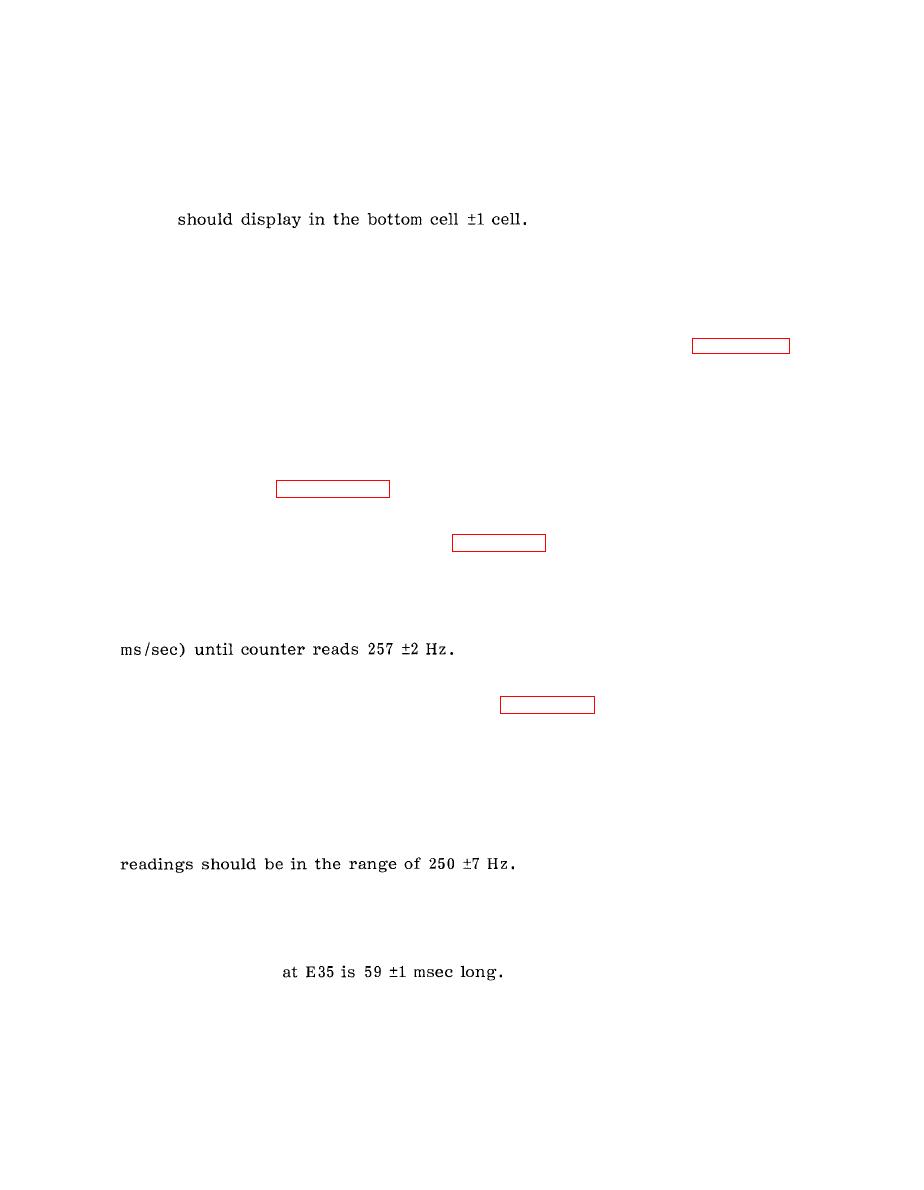 |
|||
|
|
|||
|
|
|||
| ||||||||||
|
|  TM 11-5820-917-13
Increase the input signal 55 dB and adjust gain control R 168 until the bar-
graph reaches the top of the display. Decrease the gain by one cell.
d.
Repeat steps a through c until no further adjustment is needed.
e. Allow the RCS- 4B to run one full sweep with -120 dBm input. The AGC bar-
graph
should be present on the CRT with signal levels as low as -137 dBm into the 4028
receiver or -130 dBm into the 6043 power divider. The display should not be
present for signals weaker than -147 dBm into the 4028 or -140 dBm into the 6043.
This can be adjusted with the slicing level adjustment, accessible through the top
of the display logic (1A2) module. Use the test setup as shown in figure 5-1
(signal into the 4028). Decrease the signal level to -137 dBm. A solid line should
be present for a minimum of 80% of the full sweep (2-30 MHz). To increase sensi-
tivity, adjust the slicing level control counterclockwise and, conversely, to de-
crease sensitivity and reduce background noise, adjust the slicing level clockwise.
width is controlled by ramp length R56, gain R37, and DC R49 adjustments on the
1A1A2 assembly (figure FO-10/5). The bandwidth adjustments are made as
follows :
a. Assemble equipment as shown in figure 5-1. Synchronize RCS- 4B with
TCS-4B using the 2-30 MHz sweep with a -80 dBm sweep input to the receiver
(connect to J1 on 4028).
b. Connect a frequency counter to 4028 rear panel BNC connector J9 Base-
band Out. Fine adjust RCS- 4B synchronization using Manual Sync (at 1
Make no further sync adjustments for
the remainder of this test.
c.
Then connect equipment as shown in figure 5-2.
d. Set the audio oscillator for approximately 0 dBm (50 Q) , and 200 Hz. Ob-
serve two horizontal traces on CRT near top and bottom of Chirp sounder record
display area.
e. Slowly increase audio frequency until one trace disappears and note the
audio frequency as measured on the counter. Continue to increase audio frequency
until the remaining trace disappears and note audio frequency. Both frequency
f. If adjustments are necessary, remove the module 1A1 cover to access the
spectrum analyzer output board 1A1A2 (2006-2002).
Connect an oscilloscope to E35 (SYNC A). Adjust R56 until the positive
This pulse goes high for 59 msec
going (+4V) pulse
once every second while the sounder is sweeping.
|
|
Privacy Statement - Press Release - Copyright Information. - Contact Us |